Affiliate links on Android Authority may earn us a commission. Learn more.
How to clone a hard drive or SSD on a Mac or Windows PC
Hard drives and SSDs may appear simple on the surface, but there are a lot of things under the hood making them run exactly the way they’re supposed to. That’s why cloning a hard drive or an SSD is not just a matter of copy and paste, but instead a rather complicated process. Thankfully, there are great free apps that let you clone a hard drive or SSD on either Mac or Windows PC with ease. All you need is your source disk, the one you want to clone, and a destination disk. Here’s how to clone a hard drive on a Mac or Windows PC.
QUICK ANSWER
To clone a hard drive or SSD on Windows, download Macrium Reflect Free, connect both drives, and click Clone this drive under the source disk.
To clone a hard drive or SSD on Mac, download SuperDuper, select the disks, and click Copy Now.
JUMP TO KEY SECTIONS
Prerequisite: Connecting your drives
Before you proceed, you need to ensure that your destination drive is connected to your computer for cloning, as you need both the source and destination disk connected to the same computer at the same time.
If you have a desktop computer, you generally have flexibility and room to add another drive. For HDDs, you can connect to an unused SATA port, or if your destination drive is an SSD, you can look for an M.2 port that you can connect to.
If you have a laptop, or a desktop computer that does not have space, things get a little complicated. You’d need an enclosure for your destination drive that will then allow you to connect the HDD or SSD to your computing device. If the destination drive is an HDD, it likely is a 2.5-inch SATA drive, and you’d need a SATA to USB cable that you can plug into your USB port. You can also opt for enclosures instead of simple cables, as they reduce the probability of the hard drive moving around unnecessarily, but they cost more. If the destination drive is an SSD, you’d need an M.2 to USB enclosure.
Once cloning is done, you can remove the drive from the cable and connect it to your computer in a more permanent fashion.
How to clone a hard drive or SSD on Windows
Windows has quite a few apps that will let you clone a hard drive, but the best one of the lot is Macrium Reflect Free.
- Download it from the website and install it. The installation process is a bit more complicated than the average one, but just follow the flow, and you should be fine.
- Make sure both drives are connected to your PC, i.e. the one you want to clone and the destination drive.
- Run the program when installed, and you will see this screen, with your hard disks or SSDs listed.
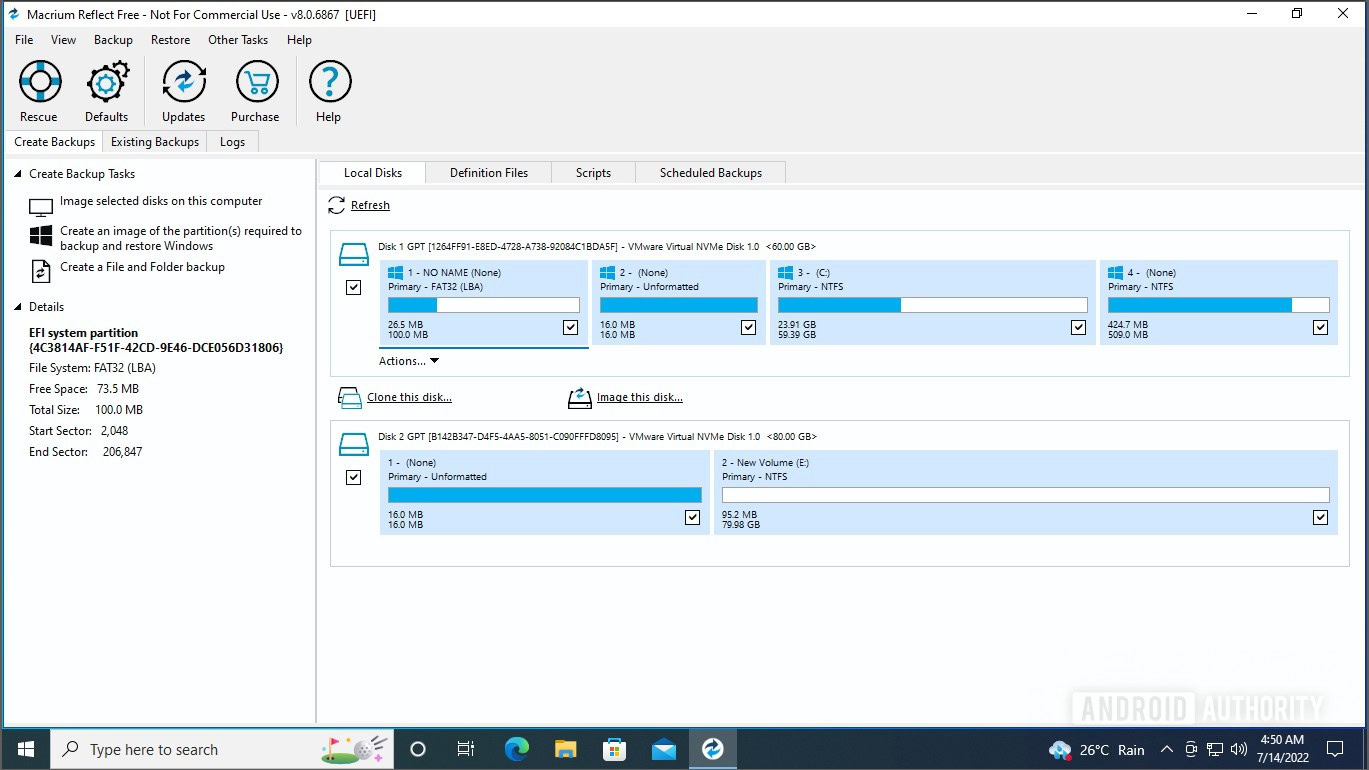
- Make sure the box next to the source drive is ticked, and click the Clone this disk option under the source disk.
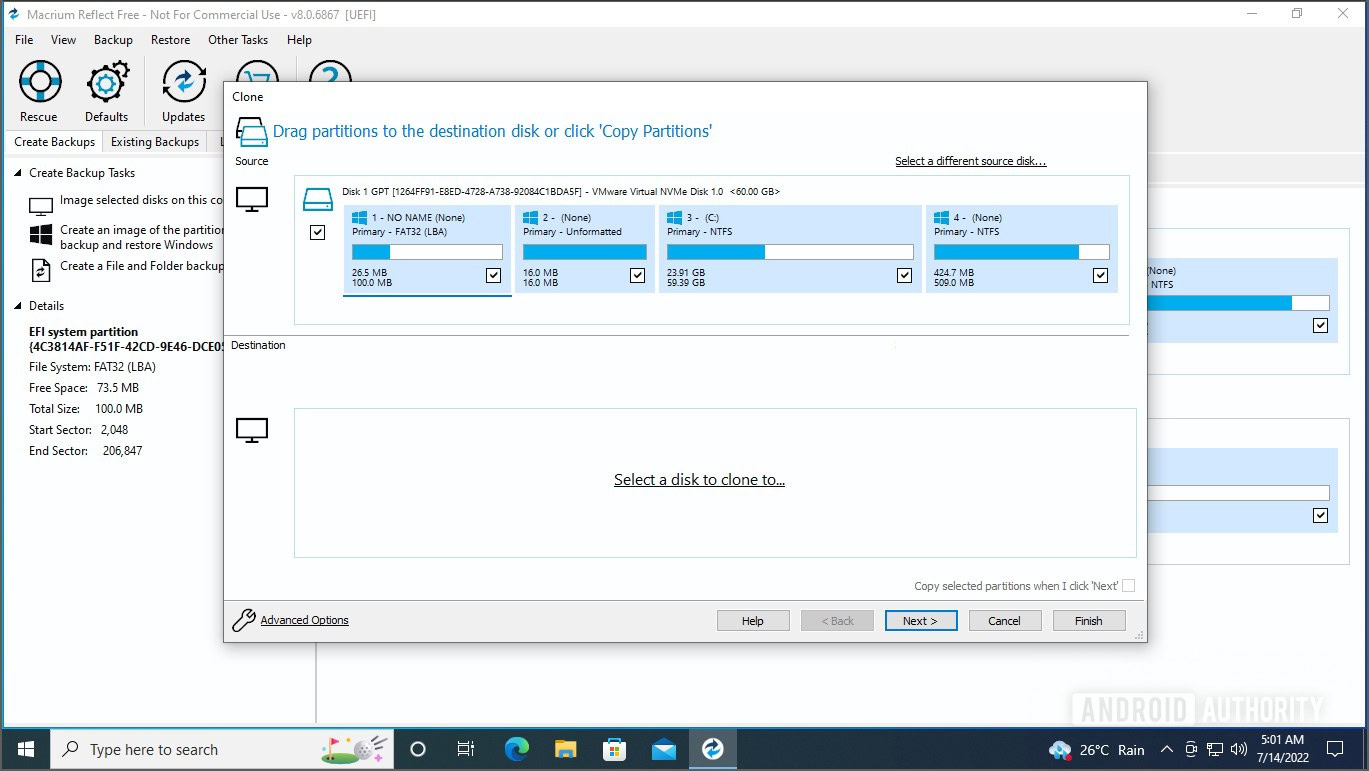
- Click Select a disk to clone to. It will give you a list of available disks.
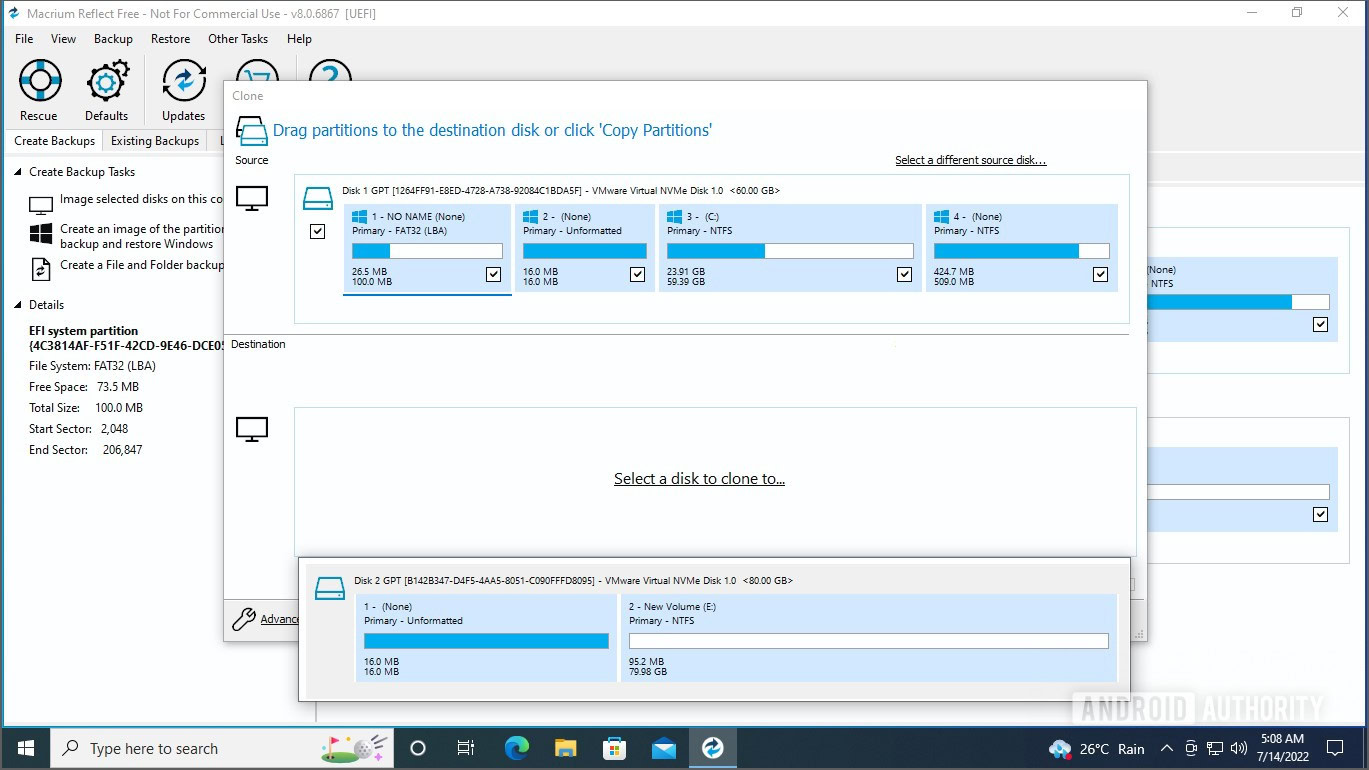
- Select your destination disk from the list by clicking it.
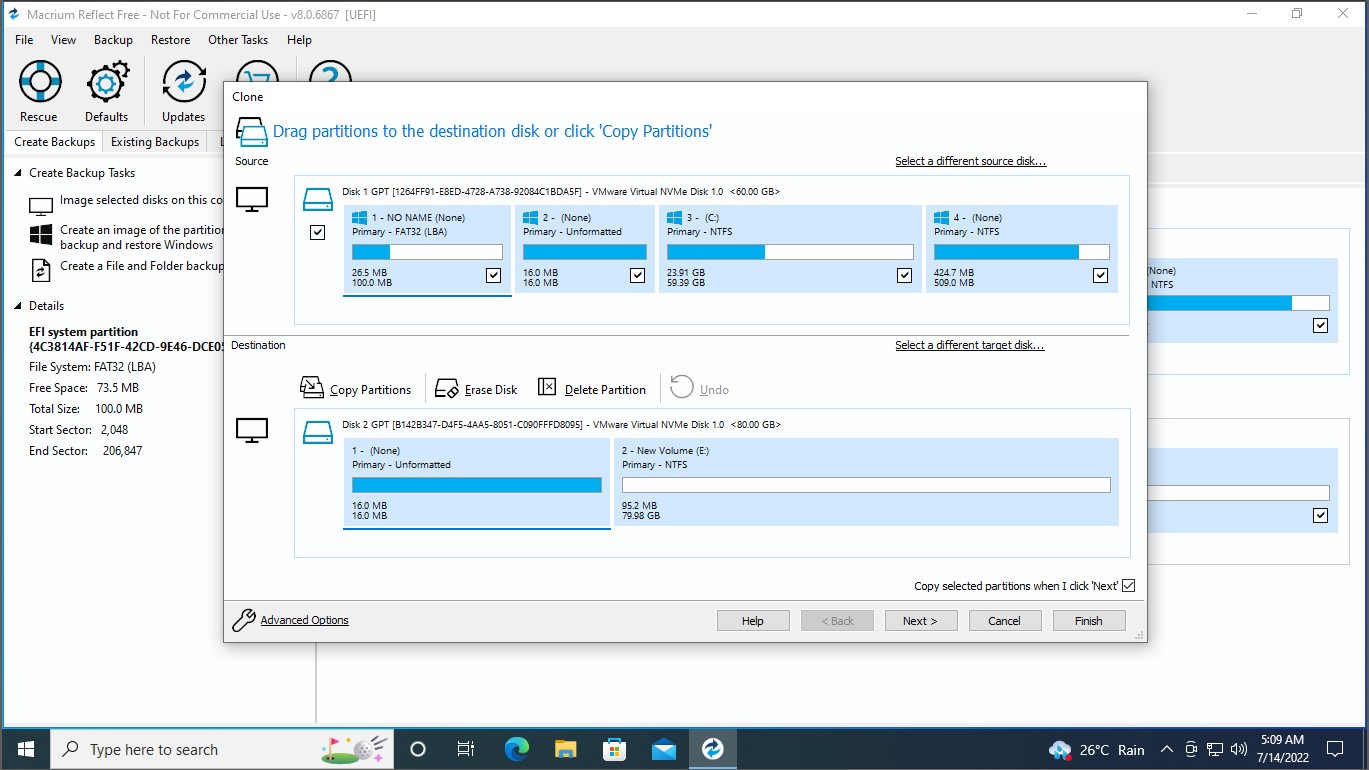
- Once selected, click Next to proceed.
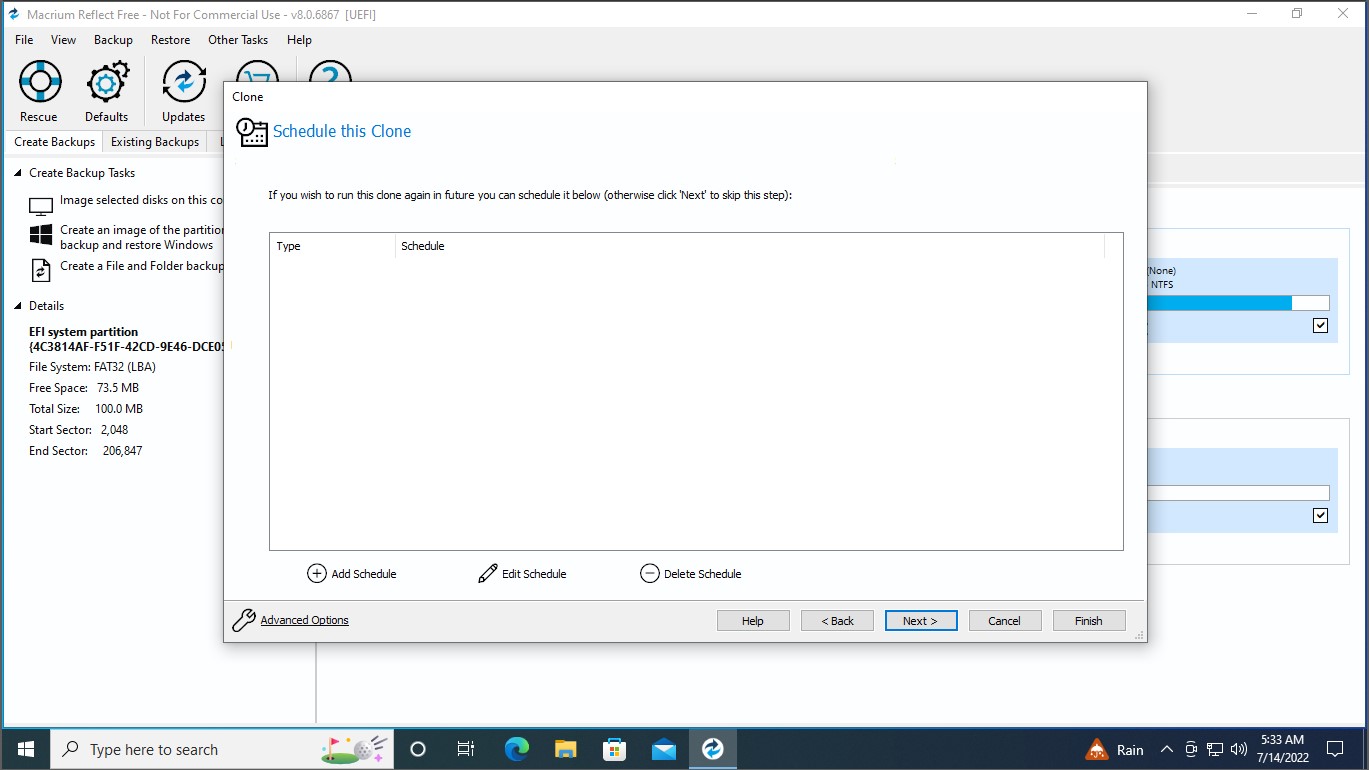
- Macrium will give you the option to schedule the clone, but you can just skip that by clicking Next.
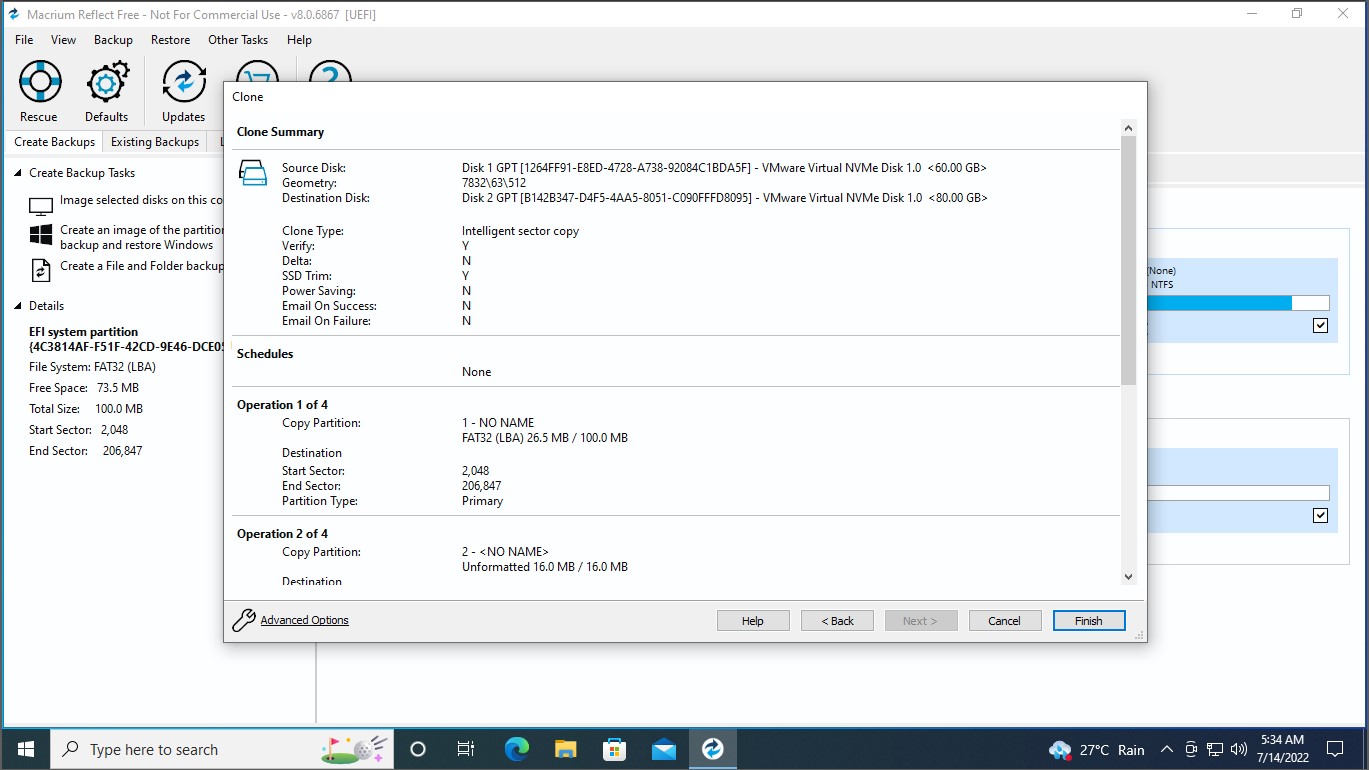
- Verify the details listed, and click Finish.
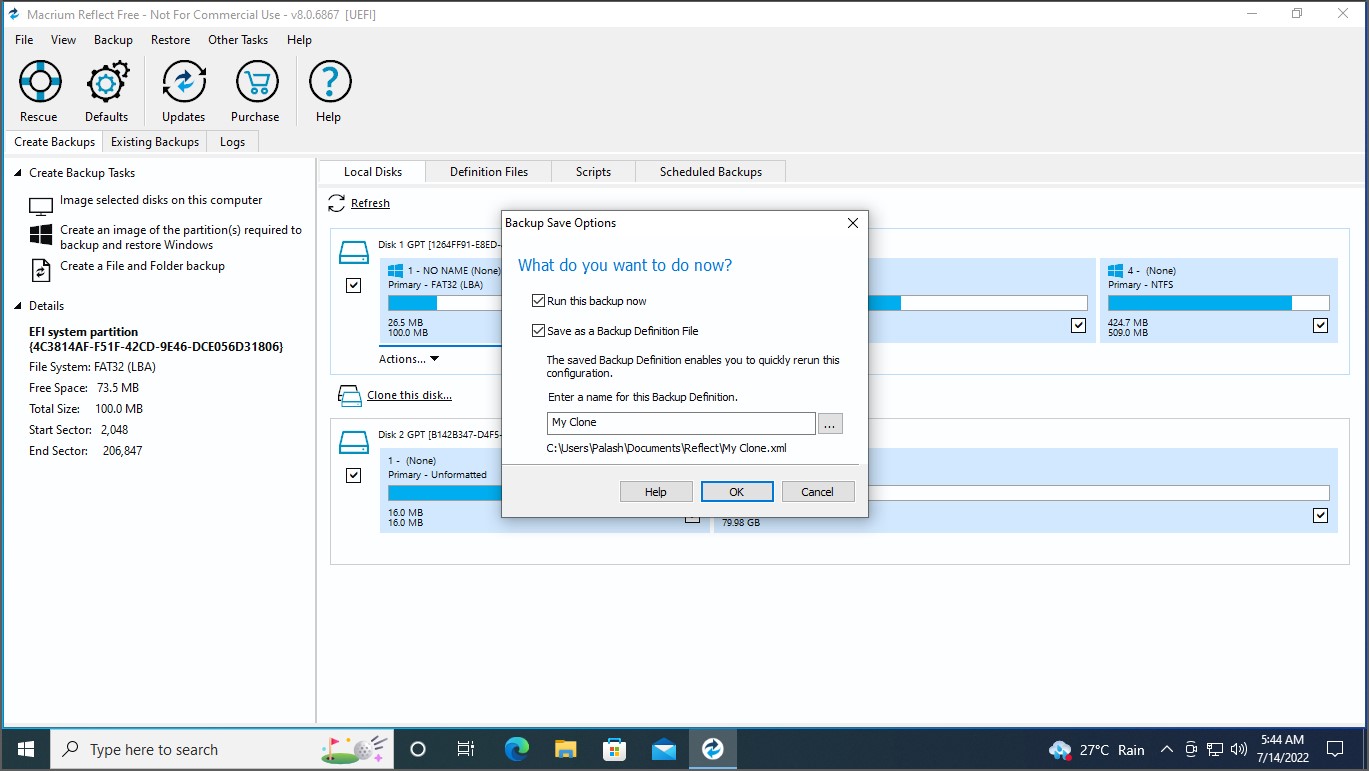
- Macrium will give you another final screen with options. You can uncheck the box next to Save as a Backup Definition File if this is a one-time clone and click OK.
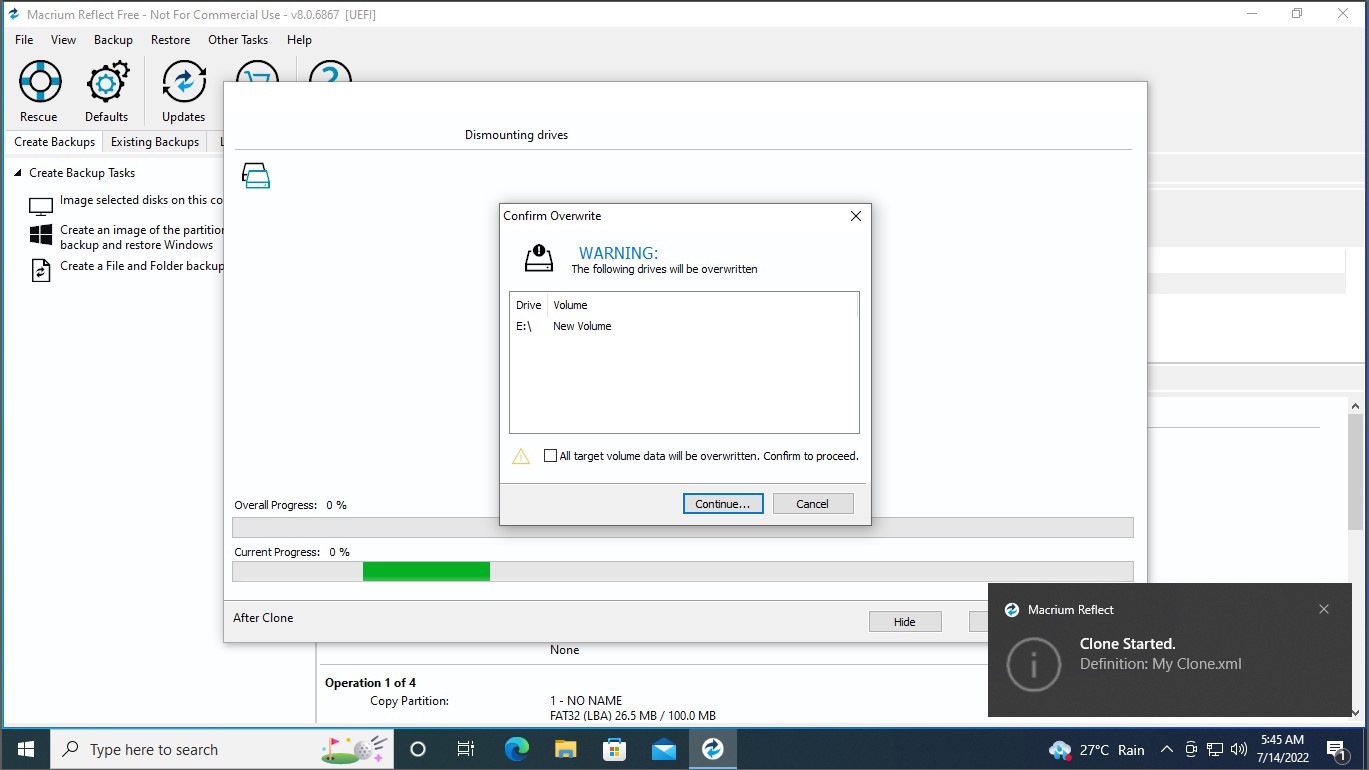
- You will see a warning about the destination drive losing all data. Check the box next to All target volumes will be overwritten. Confirm to proceed. Click Continue.
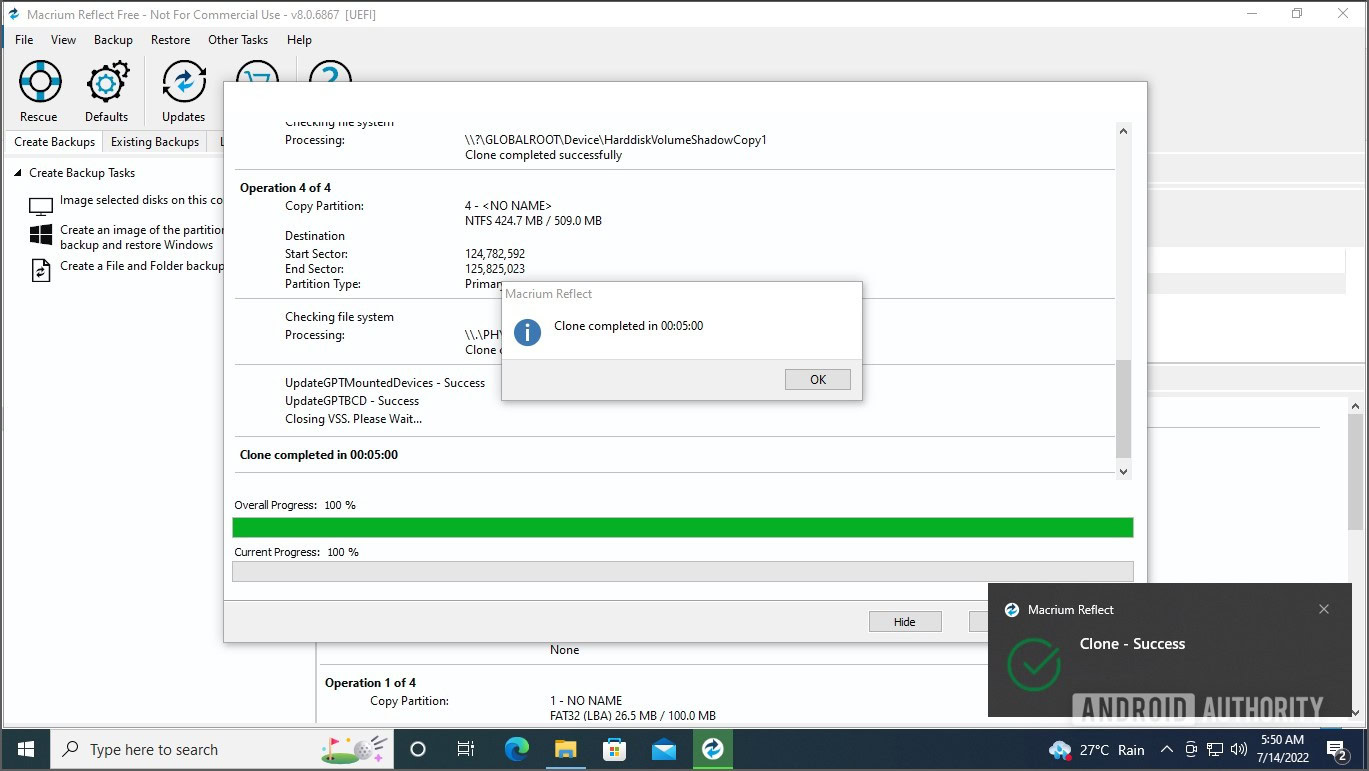
- It will take some time, generally about five minutes. When finished, you will get a success dialog box.
That’s it — your drive is now successfully cloned. If you wish to boot from the cloned drive, you can select it from the boot drive selection menu right after starting your computer.
How to clone a Mac hard drive or SSD
For Mac, we recommend using SuperDuper to clone your hard drive or SSD.
- Download and install it from the official website.
- Once installed, run the app.
- Select the source disk by clicking the drop-down next to Copy, and the destination disk from the drop-down next to to.
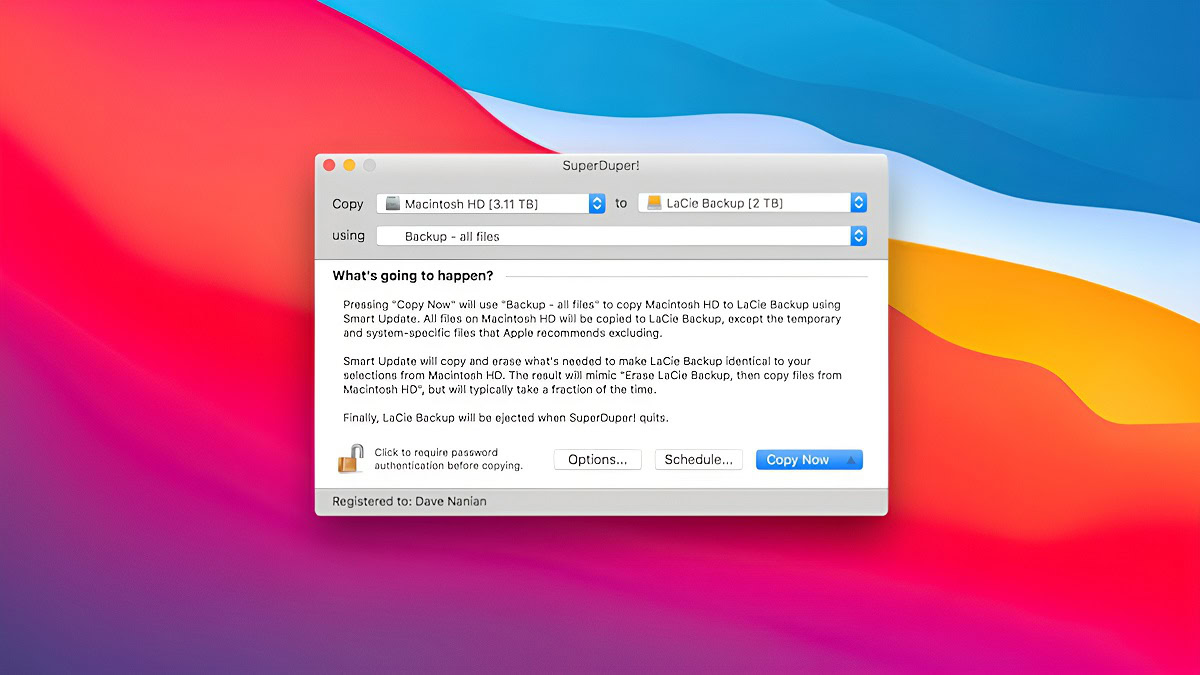
- Click the Copy Now button to begin the cloning. You will see the progress in the app. It will take some time and finish the cloning.
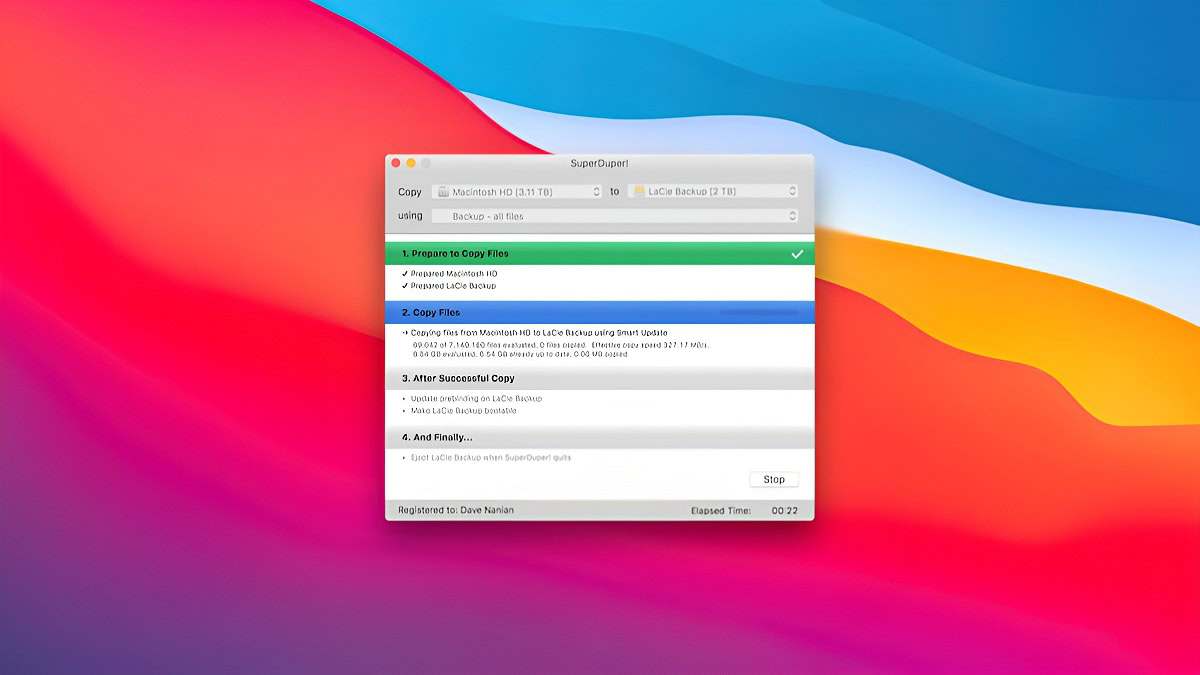
And that’s it. As you can see, the process of cloning a disk is very easy and straightforward, irrespective of whether you are using a Windows PC or a Mac. Note that the process remains the same whether your source disk or your destination disk is either an HDD or an SSD. If you’re stuck deciding on whether you should stick to an HDD or upgrade to an SSD, we’ve got a handy HDD vs SSD guide to help with your decision.
Once you’ve completed the cloned procedure, you can choose to format your source drive to reuse it for other purposes.
FAQs
The process won’t be much different than the one we’ve described above. Just connect the drive to the docking station, and then follow the procedure with the apps recommended above.
Imaging is more useful for creating backup images, while cloning is better for creating a replica that can replace the existing drive.
The best free software to clone a hard drive are Macrium Reflect Free for Windows and SuperDuper for Mac.
Yes, cloning a hard drive copies the OS. Cloning copies everything (including programs, files, and your OS) in an exact fashion, and makes your source drive and destination drive equal.
Yes, cloning a drive will make it bootable if the source drive had a bootable OS installed. Cloning creates an exact copy of the original drive.
Yes, you can clone an HDD to an SSD. The cloning process remains the same irrespective of the source disk or destination disk being an HDD or an SSD. In fact, SSDs are recommended to be used for boot drives, and for older computers, replacing the boot HDD to a cloned boot SSD is one of the most notable upgrades you can make.
Making use of the Macrium Reflect Free for Windows and SuperDuper for MacOS is the fastest way to clone a drive for free.